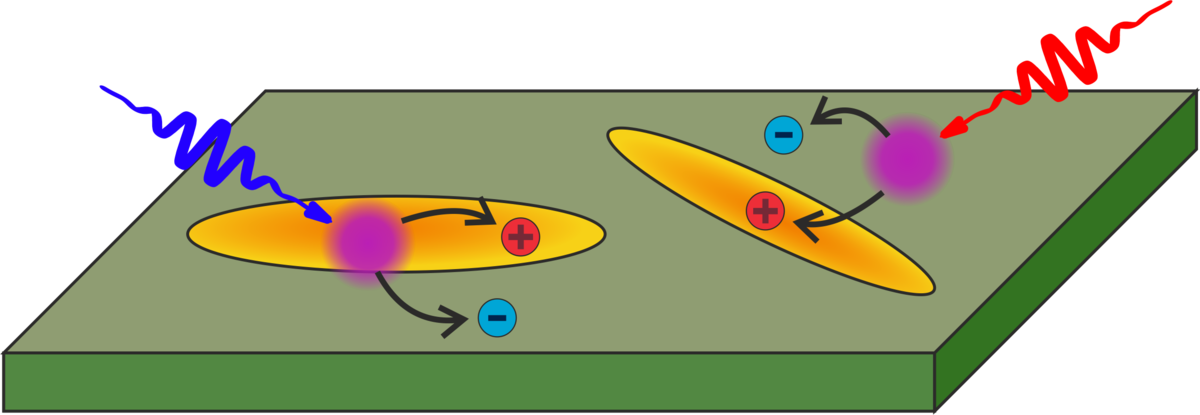2D semiconductors and hybrid structures

Transition metal dichalcogenides (TMDCs) have recently emerged as a major class of 2D semiconductors with thrilling electronic properties. Most strikingly, their atomically thin monolayers exhibit enormous exciton binding energies, while some even change their band gap from indirect to direct. All in all, these features result in drastically differing exciton dynamics compared to the free charge carriers in the bulk material.
We investigated MoS2 monolayers by ultrafast spectroscopy and compared their behavior to the bulk. In the bulk free carriers with polaronic character are formed and relax via while in the monolayer excitons are generated which decay due to deactivation at defects.
Our goal is to combine in cooperation with the group of Tobias Korn TMDC monolayers with dye molecules to form hybrid structures, with their energy levels tailored to either allow or forbid the transfer of charges from one layer to another. In particular, we study the dynamics of charge separation and concurring dynamics that are pivotal for technical applications such as solar cells, photodetectors or LEDs.
Kontakt
Institut für Physik
AG Dynamik molekularer Systeme
Albert-Einstein-Straße 23-24
18059 Rostock
Tel: 0381 498 6960
